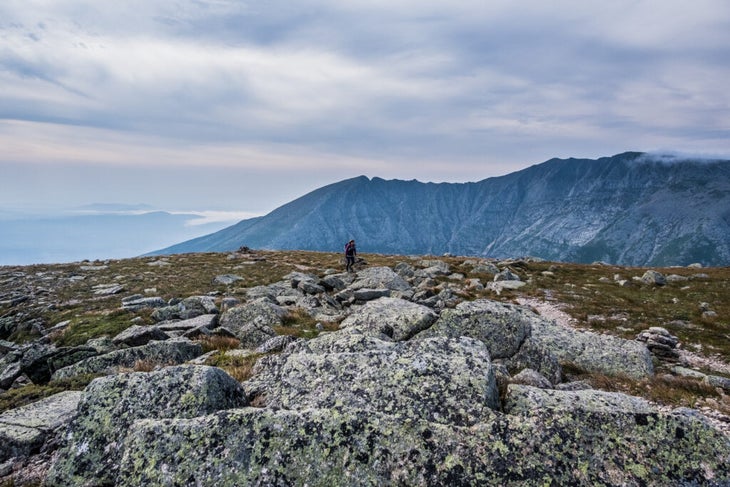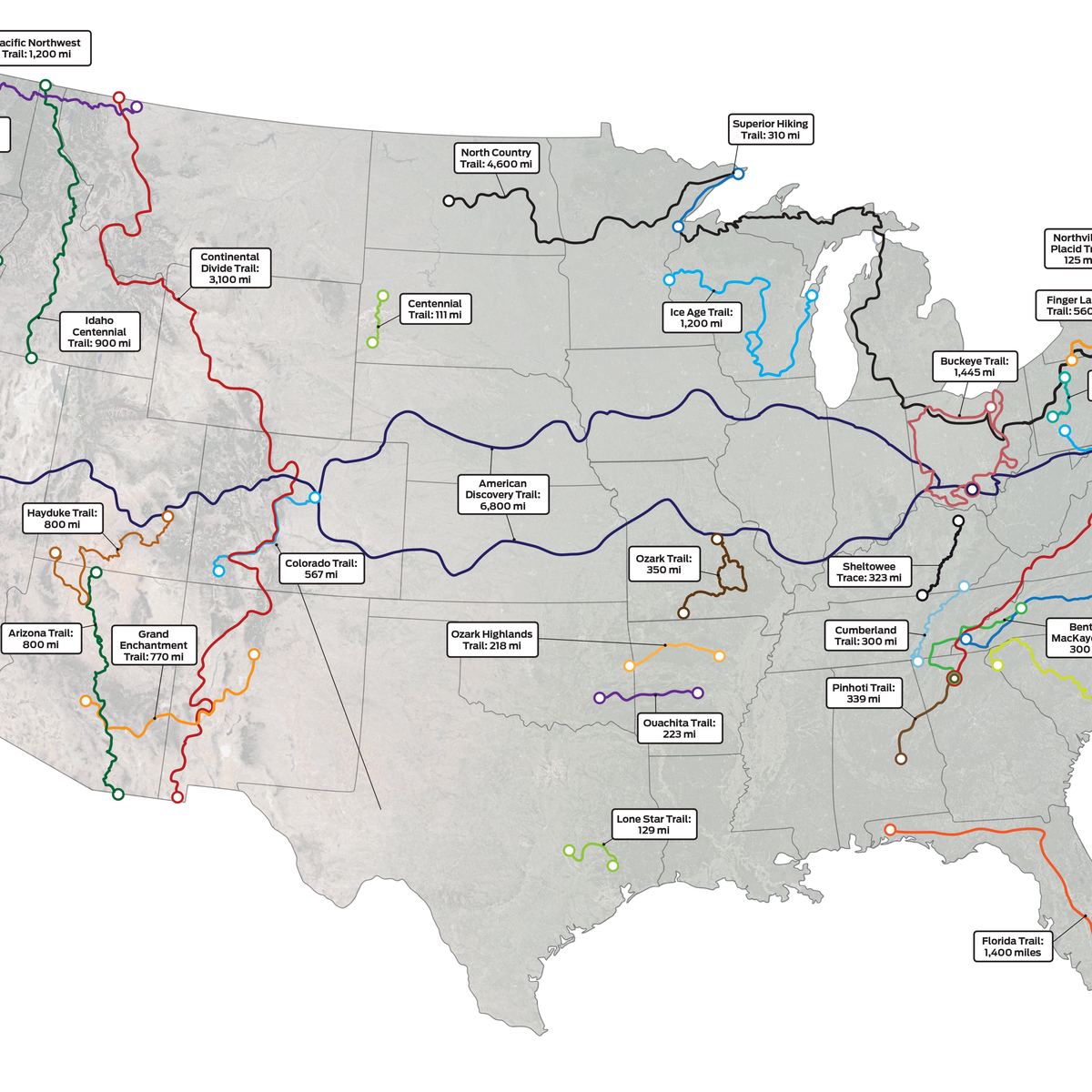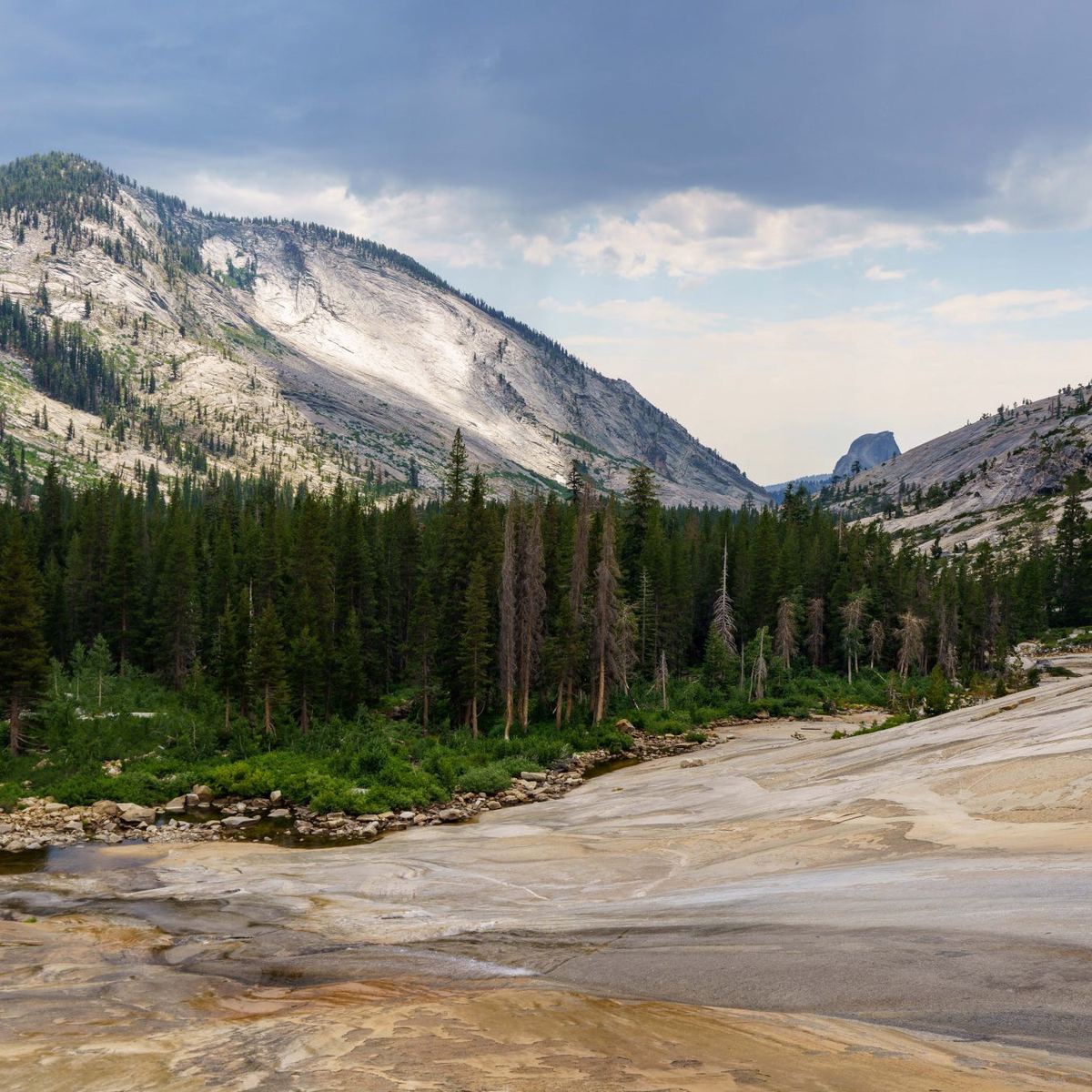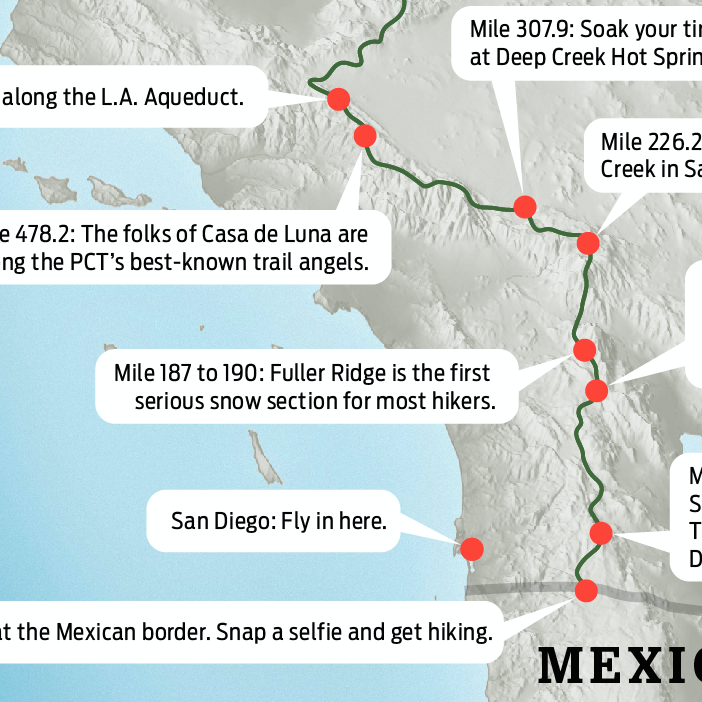The 8 Best Trails to Train for a Thru-Hike
The 8 Best Trails to Train for a Thru-Hike
Four legendary thru-hikers share their favorite spots to train for long trails.
Heading out the door? Read this article on the new Outside+ app available now on iOS devices for members! Download the app.
Whether you’re gunning for a Triple Crown trail or a more modest adventure like the 567-mile Colorado Trail, taking on a thru-hike is serious business. Spending consecutive weeks or months on a long trail is one of—if not the—toughest physical and mental challenges most athletes will ever endure.
While many hikers find their trail legs some weeks into a thru-hike, training is vital to success. Here, four of the planet’s most celebrated hikers share some of their favorite tips and go-to treks to prep for a thru-hike.
Heather Anderson
Anderson was catapulted into hiker superstardom when she broke the self-supported fastest known time (FKT) for the Pacific Crest Trail in 2013. She followed with another record-setting trek on the Appalachian Trail two years later. The 43-year-old has since become the first woman to complete the Triple Crown in a calendar year and complete the triumvirate three times.
“The best training trail is the one you’re attempting, but that’s not always practical,” Anderson said. Try to pick “a training route that’s similar in trail tread, elevation profile, weather, altitude, and distance. This will help you mimic the conditions you’ll encounter on your hike and prepare you for success.”
Mid-State Trail, Pennsylvania
The 327-mile trail passes through the state’s central mountain region and stretches from the border of Maryland to New York. It sits about 60 miles west of the AT, but veers north toward the Great Lakes where the latter angles east en route to Connecticut.
“The mountains here are much bigger, wilder, and more remote than those in the Pennsylvania section of AT,” Anderson said. Hikers pass through a series of state parks and forests filled with “rolling, rocky hills that mimic trail conditions along some of the AT’s toughest spans.”
John Muir Trail, California
Begin at the 14,505-foot summit of Mt. Whitney and follow the High Sierra backbone for 211 miles through a string of designated wilderness areas in Sequoia, Kings Canyon, and Yosemite National Parks. The path mostly runs concurrent to the Pacific Crest Trail, rarely dips below 8,000 feet in elevation, and features a staggering 47,000 feet of vertical gain.
Anderson calls the trek fantastic for training for the PCT and Continental Divide Trail.
“This is a great hike to test your legs and lungs, and prepare for the extremely mountainous sections you find on both,” she said.
Tara Dower
Dower made international headlines when she shattered the AT supported speed record by a stunning 13 hours this past September. The 31-year-old ultramarathoner from Virginia Beach went pro in 2020 and has since amassed a hoard of records, including the FKT for North Carolina’s 1,175-mile Mountains-to-Sea Trail.
“For me, the most important thing going into a big FKT attempt is knowing I’m in great trail running shape,” Dower said. After that, it’s “thinking about how long I’ll be on-trail and training accordingly.”
For a 300-miler she focuses on speed and agility. For long trails, “it’s all about endurance,” Dower said. “So I’ll do a number of trips where I put in really long days and practice hiking on four or five hours of sleep.”
While most trekkers don’t need to worry about purposeful sleep deprivation, they should be prepared to camp in all kinds of situations and weather conditions. Training hikes during high heat and snowy or rainy conditions, for instance, help to test gear and hone setup processes in tough circumstances.

Three Ridges Loop with Priest Add-on, Virginia
This 22-mile loop and added out-and-back traverses a long ridgeline that parallels the Blue Ridge Parkway and includes some of the most scenic sections of the Virginia AT. It strings together a quartet of 4,000-foot peaks and boasts a grueling elevation gain of over 8,000 feet.
“On the one hand, you’re running through these lush, green, almost tunnel-like trails that suddenly open onto amazing [eastward] vistas,” Dower said. On the other, “this section packs in a bunch of hard, rocky, technical climbs that are really challenging.”
Duncan Ridge Trail, Georgia
Dower became acquainted with the 33.3-mile, northern Georgia trail while competing in the Cruel Jewel 100 ultramarathon. The path unfolds across a namesake 17-peak ridge in the expansive Coopers Creek Wildlife Management Area and serves as a connector between the AT and the Benton MacKaye Trail.
“This is a really tough hike that relentlessly undulates up and down, up and down,” Dower said. A whopping 9,500 feet of elevation gain combines with “rough, rocky, unforgiving terrain reminiscent of the 100-Mile Wilderness” to create an ideal training hike.
Karl Meltzer
The legendary 57-year-old ultramarathoner has won more 100-mile races than anyone in history and is widely known as the sport’s GOAT. His resumé also includes former FKTs on major U.S. routes like the Appalachian Trail and 1,800-mile Pony Express National Historic Trail. Nowadays, when he’s not competing he’s coaching up-and-coming stars like Tara Dower.
“I want to limit uncertainty and feel as confident as possible,” Meltzer said about preparing for a long trail. Being in great trail shape is a given. But taking a rehearsal run on “the toughest terrain you’ll face can help you understand what you’re up against and highlight any adjustments you need to make to get prepared.” The same goes for all thru-hikers, whether or not you’re going for speed.

Mt. Katahdin to Grafton Notch, Maine
Meltzer wanted to launch his record-setting 2016 southbound AT hike with a bang. “So I decided to do a trial run to see how my body would react to that super tough opening section and lock it into my mind,” he said.
Meltzer wound up blitzing through Maine’s 281.4-mile span of AT in just six days. The segment included notoriously challenging obstacles like the 100-Mile Wilderness and steep boulder scrambles along Katahdin and Mahoosic Notch.
“That helped me really get to know the terrain and feel confident that I’d do better when I came back,” he said.
Horsethief Trail, Colorado
When it comes to getting in trail shape, Meltzer said it’s helpful to have a weekly backyard route that you can use to gauge overall conditioning. His is a 24-mile out-and-back near the tiny, southwest Rockies town of Ouray with 9,000 feet of vertical gain. The route climbs through mature conifer and aspen forests to a pair of small peaks with stunning 12,000-foot views of the surrounding San Juan National Forest.
“I love this one because it’s logistically easy for me to reach, the first four miles basically go straight up, and there’s hardly ever anyone there,” Meltzer said. “I use it to tune into my body and see what I need to work on moving forward.”
Jennifer Pharr Davis
The former National Geographic Adventurer of the Year set the record for the fastest supported Appalachian Trail thru-hike in 2008 and again in 2011. Pharr Davis has held countless other FKTs on trails across six different continents, including Australia’s 623-mile Bibbulmun Track. The 41-year-old is a best-selling author and continues to crush long trails in the U.S. and beyond—often with her two children in tow.
Going into a speed attempt, “I prefer to be as regimented as I can,” Pharr Davis said. She clears her schedule as much as possible and aims to spend 30 hours a week on a variety of trails in and around her hometown of Asheville, North Carolina—usually while wearing a pack loaded with 40 pounds of weight.
Art Loeb Trail, North Carolina
Pharr Davis calls this 31.1-mile point-to-point instrumental to the success of her 2011 Appalachian Trail FKT. The path begins in the small city of Brevard and runs northwest through Pisgah National Forest and Great Balsam Mountains to Camp Daniel Boone near the tiny town of Waynesville. It passes over a quartet of 6,000-foot peaks and offers more than 9,000 feet of elevation gain.
Art Loeb “does a great job of simulating the tougher parts of the AT in Maine and New Hampshire,” Pharr Davis said. “It has a little bit of everything—gorgeous views, exposed rock, tough climbs, steep descents. And you can do it as an out-and-back for extra madness.”
Pinhoti Trail, Alabama/Georgia
The 335-mile National Recreation Trail connects Alabama’s southernmost mountain to the southern terminus of the Benton MacKaye Trail at Buddy Cove Gap. Its geographic position makes it one of Pharr Davis’s favorites for winter training.
“I like the 150-mile Alabama section in particular,” she said. It brings warmer weather during cold months “when you’d probably be gearing up for a summer attempt and makes for a really challenging two- to three-day push.”








